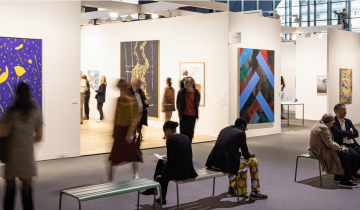Madrid. @museothyssen
To mark the centenary of the birth of the British painter Lucian Freud (1922-2011) the Museo Nacional Thyssen-Bornemisza and the National Gallery in London are presenting a retrospective on the artist and his work. The exhibition, which opens in October 2022 at the National Gallery and in February 2023 in Madrid, features around 50 works that span the seven decades of the career of one of the most important European artists of the 20th century.

“I go the National Gallery rather like going to a doctor for help” Lucian Freud
Freud’s painting, which was incisive, subversive and on occasions shocking, focused on the representation of the human body and the portrayal of modern man. An assiduous visitor to historic museums, his work reveals a series of allusions to the great masters of the past, from Egyptian art to Ingres, Courbet, Rodin and Cézanne and encompassing Grünewald, Hals, Velázquez, Rembrandt, Daumier, Watteau and Géricault, although that connection with the past coexists with a powerful spirit of independence. Freud’s true abiding interest throughout his work was to present painting on painting – his personal meta-artistic reflection and “the intensification of reality” which he always aspired to achieve.

“What do I ask of a painting? I ask it to astonish, disturb, seduce, convince” Lucian Freud
The Museo Nacional Thyssen-Bornemisza is the only Spanish museum that has works by Lucian Freud in its collection; a total of five, all of them included in this exhibition. Baron Hans Heinrich Thyssen- Bornemisza was one of the first private collectors to focus on the artist’s work: he and the painter established close ties and Freud painted him twice. The lengthy posing sessions of the type to which the artist always subjected his sitters fostered their friendship, which was a long-lasting one. In addition, Watteau’s painting Pierrot content (ca. 1712), which forms the background of one of these portraits and belongs to the collection of the Museo Thyssen, provided the inspiration for another of Freud’s paintings.

The exhibition is divided into various sections that offer an approximately chronological survey of the painter’s evolution and subject matter. These are: Becoming Freud, devoted to the artist’s early works which are notably figurative in the face of the prevailing abstract trends of the period; Early portraits, works that already reveal Freud’s desire to capture the essence of his sitters; Intimacy, which focuses on his preference for depicting people from his close circle; Power, portraits of individuals whom he agreed to paint on the basis that they accepted his conditions for working; The Studio, Freud’s creative space which became a subject in his art; and Flesh, featuring the artist’s naked portraits, that reveal his profound observation of the human body and the mortality of flesh.
“I use the people to invent my pictures with, and I can work more freely when they are there” Lucian Freud




 No products in the cart.
No products in the cart.